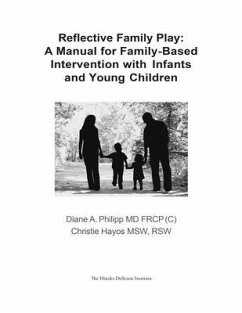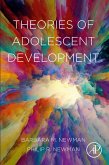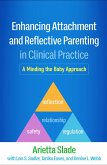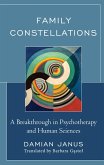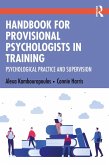Reflective Family Play (RFP) is a novel approach that bridges a gap in treatments previously available for families with infants and very young children. Historically the very young were excluded from family therapies. Meanwhile, the infant and preschool literature was filled with a range of approaches from different theoretical frameworks, but they were almost exclusively dyadic (i.e. bringing a mother, or other primary caregiver, into the clinic with their infant or very young child). RFP works with the emerging young family system. It offers a structure and play-based interactions to access family dynamics and to stimulate parental reflections.
The manual begins with two chapters on the theoretical underpinnings of the model, founded in well-researched approaches. The structure and systems theory lens is borrowed from The Lausanne Trilogue Play paradigm (Fivaz-Depeursinge & Corboz-Warnery, 1999). The theoretical orientation relies heavily on mentalization-based dyadic treatments known to enhance parental sensitivity and improve attachment. Middle chapters in the manual provide a clear overview of the model as well as in-depth case material and transcripts. Questions around technique are explored in a user-friendly manner, including common roadblocks therapists may run into using this approach. The manual also provides a section on variants of the model, for example with single parents and separated families, as well as a full chapter on assessment for appropriateness to use RFP with a family as well as a full chapter on socialization to the model. Finally, the authors provide a number of user friendly handouts in the appendices, to help the clinician with their cases.
While the manual is written in a very readable style, it is recommended that it be used in conjunction with a training in RFP with a certified trainer.The manual is user-friendly and geared towards clinicians looking to expand their repertoire to include infants and preschoolers in the family therapy setting.
The manual begins with two chapters on the theoretical underpinnings of the model, founded in well-researched approaches. The structure and systems theory lens is borrowed from The Lausanne Trilogue Play paradigm (Fivaz-Depeursinge & Corboz-Warnery, 1999). The theoretical orientation relies heavily on mentalization-based dyadic treatments known to enhance parental sensitivity and improve attachment. Middle chapters in the manual provide a clear overview of the model as well as in-depth case material and transcripts. Questions around technique are explored in a user-friendly manner, including common roadblocks therapists may run into using this approach. The manual also provides a section on variants of the model, for example with single parents and separated families, as well as a full chapter on assessment for appropriateness to use RFP with a family as well as a full chapter on socialization to the model. Finally, the authors provide a number of user friendly handouts in the appendices, to help the clinician with their cases.
While the manual is written in a very readable style, it is recommended that it be used in conjunction with a training in RFP with a certified trainer.The manual is user-friendly and geared towards clinicians looking to expand their repertoire to include infants and preschoolers in the family therapy setting.
Dieser Download kann aus rechtlichen Gründen nur mit Rechnungsadresse in A, D ausgeliefert werden.

